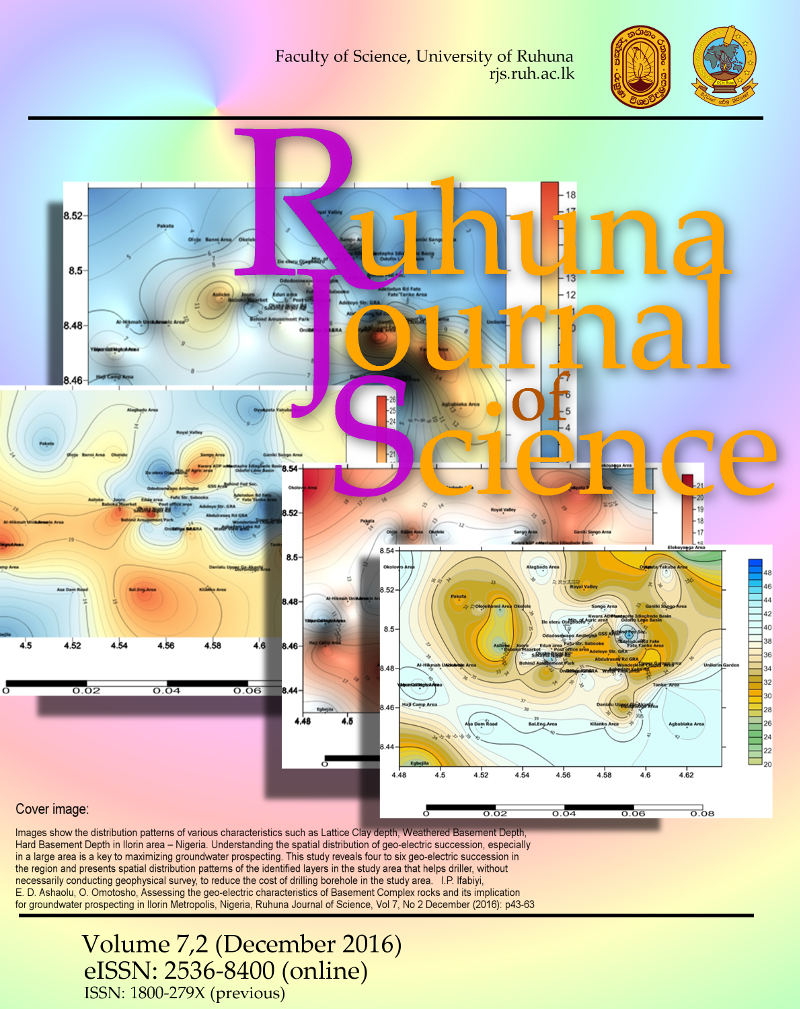Soil amendment with raw rice hull as a source of silicon in enhancing anthracnose disease resistance, plant growth and fruit qualities of chili pepper (Capsicum annuum L.)
Abstract
This study was conducted to investigate the effect of soil incorporation of raw rice hull (RRH) as a source of silicon on plant growth, yield and anthracnose disease development of Capsicum annuum L. ‘Muria F1’. Experiment was conducted using five different ratios of RRH:soil:sand (T1-3:2:0, T2-3:0:2, T3-3:1:1, T4-2:3:0, T5-1:1:3) in the first 5 treatments and applying potassium silicate (PS) as a Si source at the rate of 75 mg/L to the soil replacing RRH in the 6th (positive control). The plants grown in soil medium with no addition of a silicon source were used as the negative control. All treatments were arranged in a completely randomized design with 4 replicates. Anthracnose disease development was assessed as number of days for the appearance of symptoms and the mean lesion areas by challenge inoculation with Colletotrichum gloeosporioides on fruits. The highest reduction of disease severity (61%) was observed in crops grown in soils amended with RRH (T1) compared to control plants. The disease reduction observed in fruits from plants provided with potassium silicate was only about 15%, compared to that of Si-free plants. It was concluded that incorporation of rice hull (60% of the media) in the growing substrate would be an effective solution against anthracnose disease of chili pepper plants.  Keywords. Capsicum annuum, silicon, rice hull, soil amendmentÂReferences
Du M, Schardl CL, Nuckles EM, Vaillancourt LJ. 2005. Using mating-type gene sequences for improved phylogenetic resolution of Colletotrichum species complexes. Mycologia 97: 641-658.
Ghasemi A, Ejraei A, Rajaei M. 2013. Effect of Silicon on vegetative and generative performance of Broad Bean (Vicia faba L.). Journal of Novel Applied Science. 2 (S): 881–884.
Huang C, Roberts PD, Datnoff LE .2011. Silicon suppresses Fusarium crown and root rot of tomato. Journal of Phytopathology 159: 546–554.
Jayawardana HARK, Weerahewa HLD, Saparamadu MDJS. 2015. Enhanced resistance to anthracnose disease in chili pepper (Capsicum annuum L.) by amendment of the nutrient solution with silicon. Journal of Horticultural Science and Biotechnology 90(5): 557–562.
Jayawardana HARK, Weerahewa HLD, Saparamadu MDJS. 2016. The effect of rice hull as a silicon source on anthracnose disease resistance and some growth and fruit parameters of Capsicum grown in simplified hydroponics. International Journal of Recycling of Organic Waste in Agriculture 5: 9-15.
Kamenidou S. 2005. Silicon supplementation affects greenhouse produced cut flowers, M,Sc. Thesis, Faculty of the Graduate College, Oklahoma State University.
Kamenidou S, Cavins TJ, Marek S. 2008. Silicon Supplements Affect Horticultural Traits of Greenhouse-produced Ornamental Sunflowers. HortScience 43 (1): 236-239.
Oanh LTK, Korpraditskul V, Rattanakreetakul C. 2004. A pathogenicity of anthracnose fungus, Colletotrichum capsici on various Thai chili varieties. Kasetsart Journal (Natural Science) 3: 103-108.
Patel M, Karera P, Prasanna P. 1987. Effect of thermal and chemical treatments on carbon and silica contents in rice husk. Journal of Materials Science 22: 2457-2464.
Rajapakse RGAS, Ranasinghe, JADAR. 2002. Development of variety screening method for anthracnose disease in chili. Tropical Agricultural Reseach and Extention, 5: 7-11.
Savant NK, Snyder GH, Datnoff LE. 1999. Silicon management and sustainable rice production. Advanced Agronomy 58: 151-199.
Sutton BC. 1980. The Coleomycetes. Fungi imperfect with pycnidia, acervula and stromata. Commonwealth Mycological institute. Kew, UK. 522-537.
Sutton BC. 1992. The genus Glomerella and its anamorph Colletotrichum. In : Colletotrichum : Biology, pathology and control. (Bailey JA, Jeger MJ (eds). CAB International: Wallingford, Oxon, UK. 1-26.
Downloads
Published
Issue
Section
License
From Volume 7 (2016) onwards, all articles published in Ruhuna Journal of Science are Open Access articles published under the Creative Commons CC BY-NC 4.0 International License. This License permits use, distribution and reproduction in any medium, provided the original work is properly cited and is not used for commercial purposes.
Copyright on any research article published in RJS is retained by the respective author(s).
Authors who publish with this journal agree to the following terms:
a) Authors retain copyright and grant the journal right of first publication with the work simultaneously licensed under a Creative Commons Attribution License CC-BY-NC 4.0 International, that allows others to share the work with an acknowledgement of the work's authorship and initial publication in this journal.
b) Authors are able to enter into separate, additional contractual arrangements for the non-exclusive distribution of the journal's published version of the work (e.g., post it to an institutional repository or publish it in a book), with an acknowledgement of its initial publication in this journal.
c) Authors are permitted and encouraged to post their work online (e.g., in institutional repositories or on their website) prior to and during the submission process, as it can lead to productive exchanges, as well as earlier and greater citation of published work (See The Effect of Open Access).

